- What is Ashscholzia?
- Growing Ashscholzia from Seeds
- 1. Choosing the right seeds:
- 2. Preparing the soil:
- 3. Sowing the seeds:
- 4. Providing proper care:
- 5. Harvesting and enjoying the blooms:
- 6. Saving seeds:
- Choosing the Right Location for Ashscholzia
- Sunlight
- Soil
- Protection from Wind
- Climate
- Plant Spacing
- Companion Plants
- Soil Preparation for Ashscholzia
- 1. Choosing the Right Location
- 2. Testing the Soil
- 3. Removing Weeds and Debris
- 4. Adding Organic Matter
- 5. Improving Drainage
- 6. Leveling the Soil
- 7. Adding Fertilizer
- 8. Watering the Soil
- Planting Ashscholzia Seeds
- Step 1: Choose the right time
- Step 2: Prepare the soil
- Step 3: Sow the seeds
- Step 4: Water the seeds
- Step 5: Provide the right conditions
- Step 6: Care for the seedlings
- Step 7: Maintain the plants
- Ashscholzia Watering and Care
- Watering
- Care
- Conclusion
- Common Ashscholzia Pests and Diseases
- Pests
- Diseases
- Harvesting and Using Ashscholzia
- Questions and Answers:
- Can I grow Ashscholzia from seeds?
- When should I plant Ashscholzia seeds?
- How do I plant Ashscholzia seeds?
- How long does it take for Ashscholzia seeds to germinate?
- Where should I plant Ashscholzia?
- What is the best way to care for Ashscholzia?
- How tall does Ashscholzia grow?
- Videos: How To Grow Alyssum Flower | SEED TO FLOWER
Are you looking to add a burst of vibrant color to your garden? Look no further than Ashscholzia, commonly known as the California poppy. This stunning flower is known for its bright orange and yellow petals and its ability to attract bees and butterflies. If you’re interested in growing Ashscholzia from seeds, this comprehensive guide will provide you with all the information you need to successfully plant and care for these beautiful flowers.
Planting Ashscholzia is relatively easy and can be done in various locations, such as garden beds, containers, or even along pathways. However, it’s important to choose a spot that receives full sun, as Ashscholzia thrives in bright, direct sunlight. The soil should be well-drained and moderately fertile.
When it comes to sowing Ashscholzia seeds, it’s best to sow them directly into the soil in early spring. Before planting, make sure to prepare the soil by removing any weeds and loosening it with a garden fork. Sow the seeds at a depth of about ¼ inch and gently cover them with soil. Water the area thoroughly, keeping the soil moist but not waterlogged.
Once the Ashscholzia seeds have sprouted, it’s important to thin them out to ensure proper growth. Thin the seedlings to a spacing of about 6-8 inches apart. This will give each seedling enough space to grow and prevent overcrowding. Additionally, it’s important to continue watering the plants regularly, especially during dry spells.
Tip: To encourage continuous blooming, deadhead the faded flowers regularly.
Overall, growing Ashscholzia from seeds is a rewarding experience that will add a splash of color to any garden. With proper planting and care, you can enjoy the beauty of these vibrant flowers throughout the spring and summer months. So why wait? Start sowing your Ashscholzia seeds today!
What is Ashscholzia?
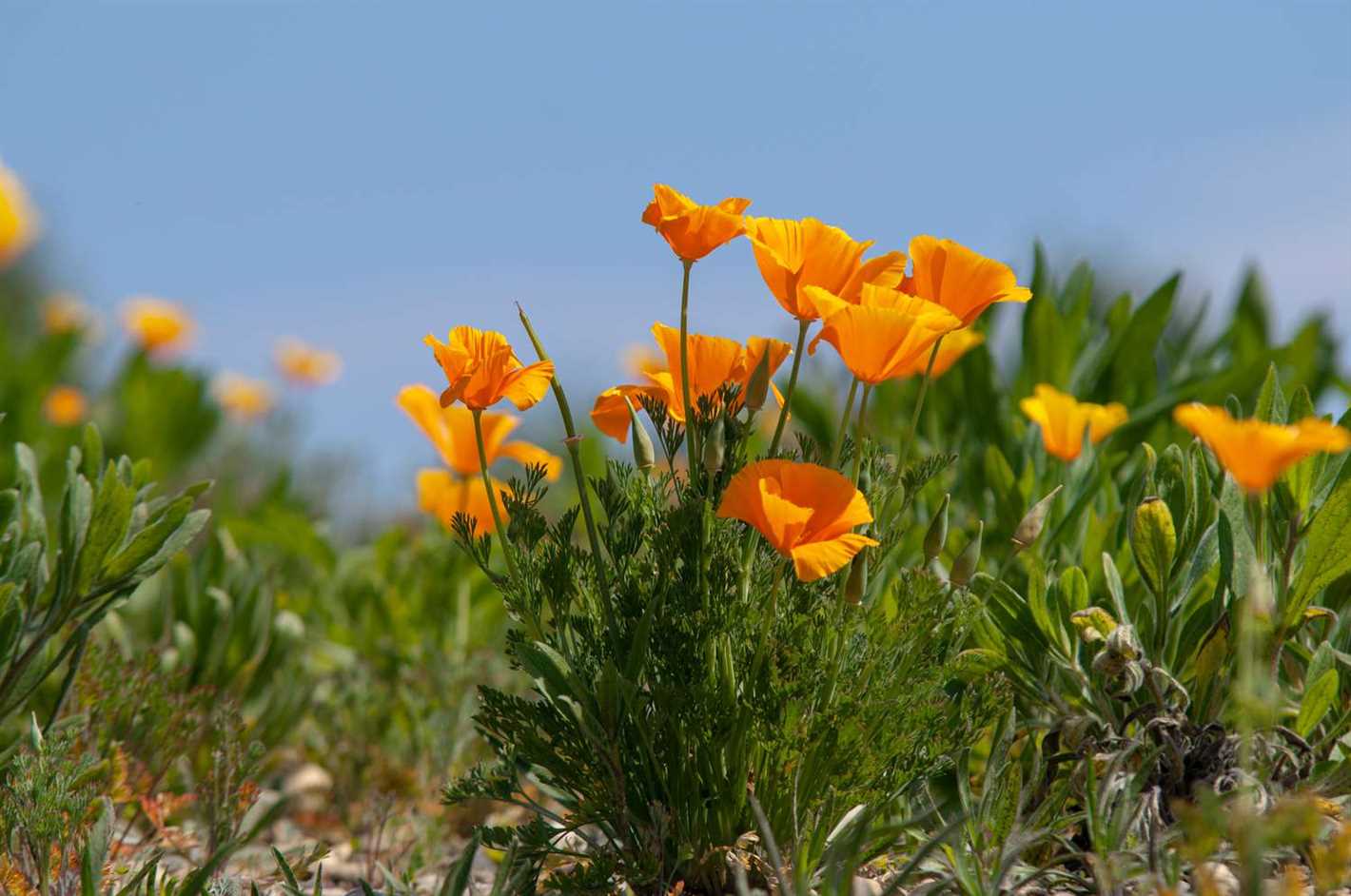
Ashscholzia is a genus of flowering plants in the family Papaveraceae. It is commonly known as the California poppy or golden poppy. These plants are native to California and are known for their bright orange, yellow, or red flowers.
The name “Ashscholzia” comes from the Botanist Johann Friedrich Freiherr von Ascherson, who discovered and named the genus in the 19th century.
Ashscholzia plants are annuals and grow to a height of about 12-18 inches. They have feathery, blue-green foliage and produce beautiful cup-shaped flowers. The flowers open during the day and close at night or during cold weather.
One of the most attractive features of Ashscholzia is its ability to self-sow. This means that after the flowers have bloomed and the seed pods have formed, the plant will drop its seeds onto the ground. These seeds will then germinate and grow into new plants the following year.
Ashscholzia plants are often grown as ornamental flowers in gardens and landscapes. They are easy to grow from seeds and can be sown directly in the garden or started indoors and transplanted later. They prefer well-draining soil and full sun exposure.
These plants are also known for their drought tolerance and can survive in dry conditions. However, they will benefit from regular watering, especially during hot and dry periods of the year.
Overall, Ashscholzia is a beautiful and easy-to-care-for flower that adds a vibrant touch to any garden. Whether you are a beginner gardener or an experienced one, growing Ashscholzia from seeds will surely bring joy and color to your outdoor space.
Growing Ashscholzia from Seeds
Ashscholzia, also known as California poppy, is a beautiful flowering plant that can be easily grown from seeds. Here is a step-by-step guide to help you successfully grow Ashscholzia from seeds:
1. Choosing the right seeds:
Start by selecting high-quality Ashscholzia seeds. Look for a reputable supplier or buy seeds from a trusted gardening center. Make sure the seeds are fresh and properly stored.
2. Preparing the soil:
Ashscholzia prefers well-drained soil with a pH level between 6.0 and 7.0. Prepare the soil by loosening it and removing any weeds or debris. You can enhance the soil fertility by adding compost or well-rotted manure. Avoid using heavy clay soils, as they can lead to poor drainage.
3. Sowing the seeds:
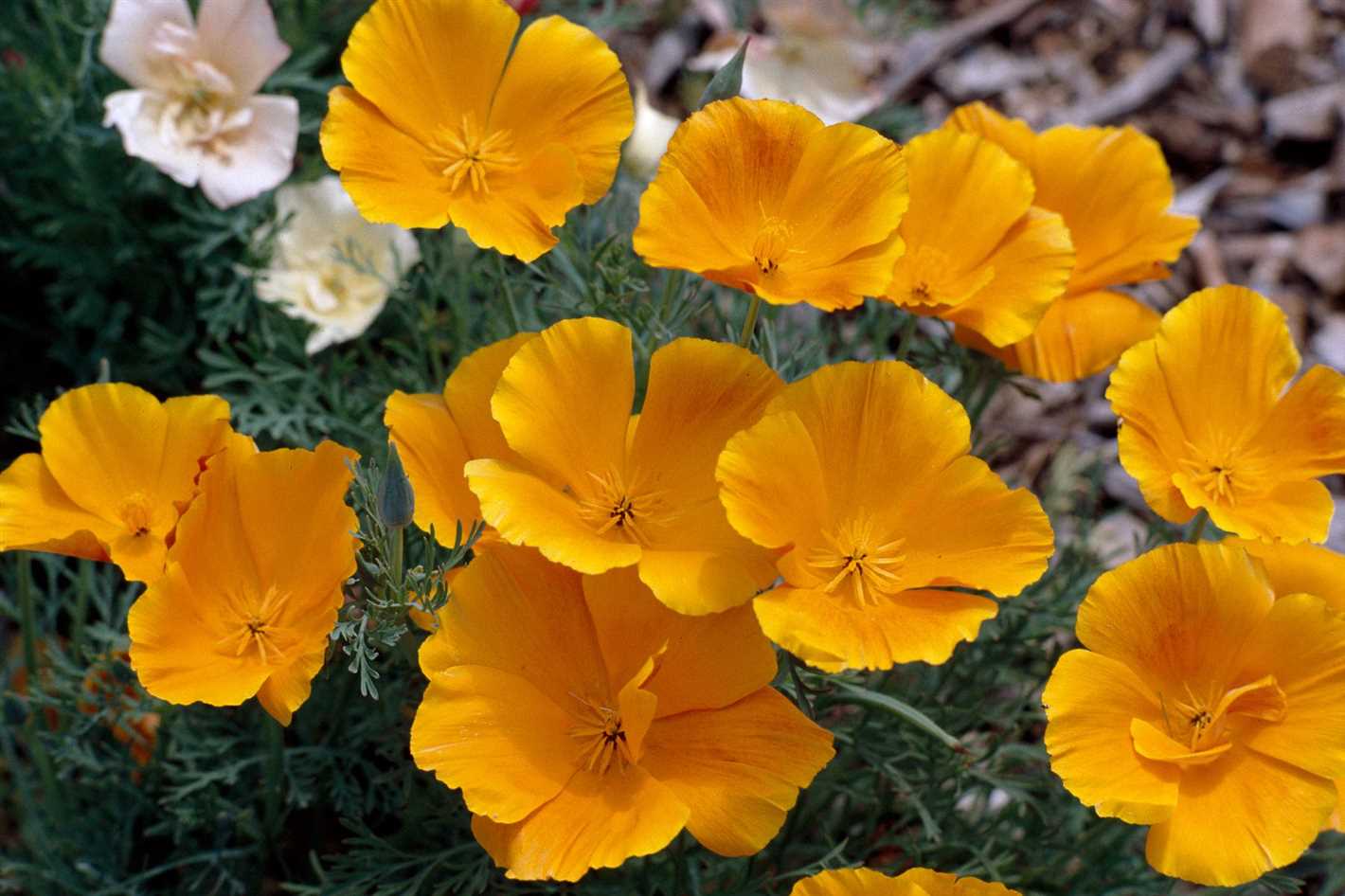
Plant Ashscholzia seeds directly in the garden or in containers. Sow the seeds in early spring, after the danger of frost has passed. The seeds need light to germinate, so lightly press them into the soil surface without covering them. Space the seeds about 6 inches apart to allow enough room for growth.
4. Providing proper care:
- Water the seeds immediately after sowing and keep the soil consistently moist until germination.
- Once the seedlings emerge, maintain a regular watering schedule, keeping the soil evenly moist but not waterlogged.
- Fertilize the Ashscholzia plants every 4-6 weeks with a balanced fertilizer to promote healthy growth and abundant blooms.
- Pinch back the plants to encourage branching and bushier growth.
- Keep an eye out for pests and diseases, such as aphids or powdery mildew, and take appropriate measures to control them.
5. Harvesting and enjoying the blooms:
Ashscholzia plants typically start blooming within 60-90 days after sowing. The flowers come in a variety of colors, including orange, yellow, pink, and white. Harvest the blooms when they are fully open for the longest vase life. Enjoy the beautiful Ashscholzia flowers in your garden or use them in floral arrangements.
6. Saving seeds:
If you wish to save Ashscholzia seeds for future planting, allow the seed pods to dry on the plants. Once the pods turn brown and begin to split open, harvest them and remove the seeds. Store the seeds in a cool, dry place until you are ready to plant them again.
By following these steps, you can grow Ashscholzia from seeds and enjoy the vibrant blooms of this lovely flowering plant in your garden.
Choosing the Right Location for Ashscholzia
Ashscholzia, also known as California poppy, is a beautiful and vibrant wildflower that can add a touch of color to any garden or landscape. To ensure the health and success of your Ashscholzia plants, it is important to choose the right location for planting.
Sunlight
Ashscholzia thrives in full sunlight, so it is important to choose a location that receives at least 6 hours of direct sunlight per day. Without enough sunlight, the plants may become weak and leggy, and their flowers may not bloom to their full potential.
Soil
Ashscholzia prefers well-draining soil that is not too rich in organic matter. The soil should be loose and sandy, with a pH level between 6.0 and 7.0. If the soil is too dense or heavy, consider adding some sand or perlite to improve drainage.
Protection from Wind

Ashscholzia plants have delicate stems and flowers that can easily be damaged by strong winds. Choose a location that is protected from strong gusts of wind, such as near a fence or a row of shrubs.
Climate
Ashscholzia is native to California and prefers a mild, Mediterranean-like climate. It can tolerate some heat and drought, but extreme temperatures or prolonged periods of high humidity can negatively affect the plants. If you live in an area with harsh winters or hot summers, consider growing Ashscholzia as an annual or in containers that can be moved indoors during extreme weather.
Plant Spacing
Ashscholzia plants can spread and grow quite large, so it is important to give them enough space to thrive. Space them at least 8 to 12 inches apart to allow for proper air circulation and prevent overcrowding.
Companion Plants
Ashscholzia can be planted alongside other drought-tolerant and sun-loving plants, such as lavender, salvia, or yarrow. These plants can provide additional color and texture to complement the Ashscholzia flowers.
By choosing the right location for your Ashscholzia plants, you can ensure their healthy growth and enjoy a beautiful display of vibrant flowers in your garden or landscape.
Soil Preparation for Ashscholzia
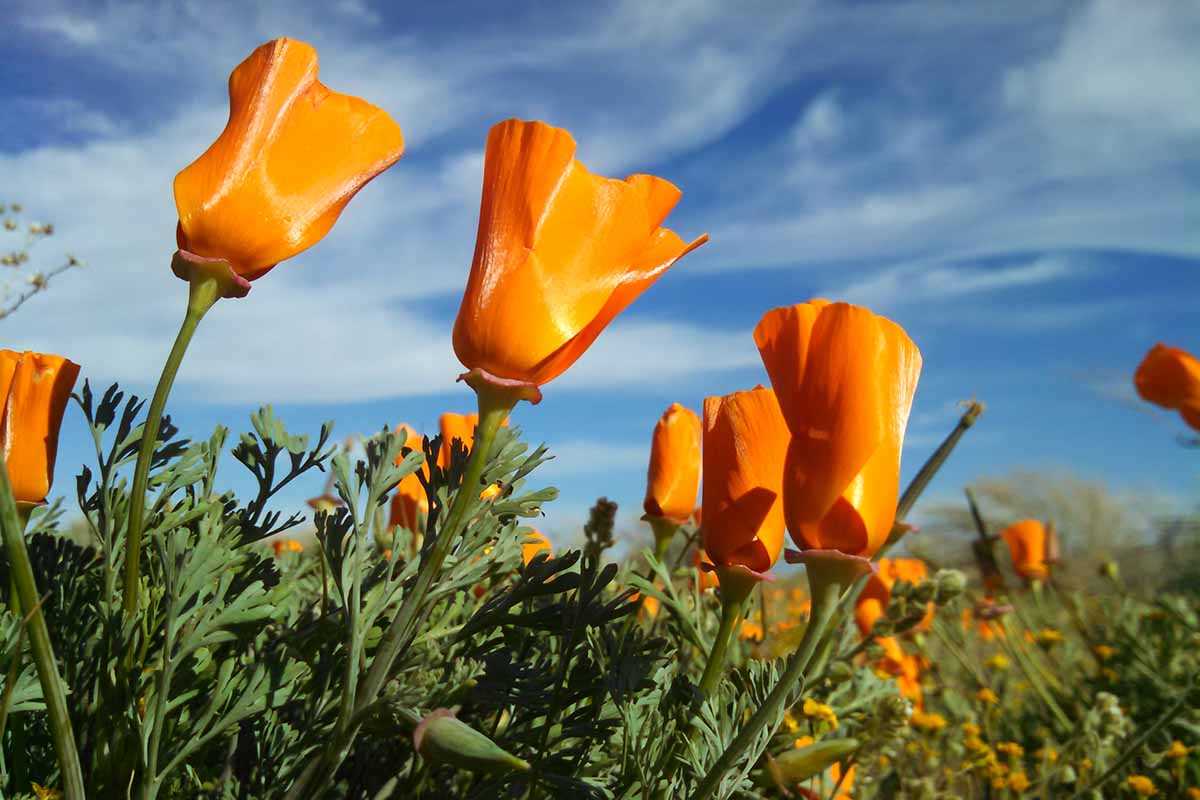
1. Choosing the Right Location
Before preparing the soil for Ashscholzia, it’s essential to choose the right location for planting. Ashscholzia prefers a sunny spot with well-draining soil. It is best to choose a location that receives at least six hours of direct sunlight per day.
2. Testing the Soil
Testing the soil is an important step in preparing it for Ashscholzia. You can use a soil testing kit or send a sample to a local agricultural extension office to get accurate results. The ideal pH level for Ashscholzia is slightly acidic to neutral, around 6.0 to 7.0.
3. Removing Weeds and Debris
Before preparing the soil, it’s important to remove any weeds, grass, or debris from the planting area. Weeds can compete with Ashscholzia for nutrients and water, so ensure the planting area is free from these unwanted plants.
4. Adding Organic Matter
Adding organic matter to the soil can help improve its texture and fertility. You can incorporate well-rotted compost, aged manure, or leaf mold into the soil. Spread a layer of organic matter over the planting area and mix it into the top few inches of soil using a garden fork or tiller.
5. Improving Drainage
If your soil has poor drainage, you can improve it by adding perlite, pumice, or coarse sand. These materials will help loosen the soil and promote better drainage, preventing waterlogged conditions that can be harmful to Ashscholzia plants.
6. Leveling the Soil
After adding organic matter and improving the drainage, level the soil surface using a rake. A smooth and even soil surface will provide a good foundation for planting Ashscholzia seeds or seedlings.
7. Adding Fertilizer
Ashscholzia plants do not require heavy feeding, but adding a balanced fertilizer before planting can help provide essential nutrients. Use a slow-release fertilizer and follow the package instructions for application rates.
8. Watering the Soil
Before planting Ashscholzia seeds or seedlings, water the soil thoroughly to ensure it is evenly moist. This will help the seeds germinate and provide a good start for the young plants.
Following these steps for soil preparation will help create an ideal growing environment for Ashscholzia. Remember to maintain proper watering and regular weeding throughout the growing season for healthy and vibrant plants.
Planting Ashscholzia Seeds
Ashscholzia, also known as California poppy, is a beautiful and vibrant flower that can add a pop of color to any garden. Growing Ashscholzia from seeds is a relatively easy process, and with proper care, you can enjoy these lovely flowers in your own garden. Here is a step-by-step guide on how to plant Ashscholzia seeds.
Step 1: Choose the right time
The best time to plant Ashscholzia seeds is in early spring, after the danger of frost has passed. These flowers prefer cooler temperatures and can become stressed in hot summer weather. By planting in spring, you will give them enough time to establish and bloom before the summer heat arrives.
Step 2: Prepare the soil
Ashscholzia prefers well-draining soil with a pH between 6.0 and 7.0. Before planting the seeds, loosen the soil using a garden fork or tiller. Remove any weeds or debris, and mix in organic matter like compost or peat moss to improve drainage and fertility.
Step 3: Sow the seeds
Scatter the Ashscholzia seeds over the prepared soil. You can gently press them into the soil, but avoid covering them with too much soil, as these seeds need light to germinate. Aim for a spacing of about 6 inches between each seed.
Step 4: Water the seeds
After sowing the seeds, water the area thoroughly. Keep the soil consistently moist but not waterlogged. It’s important to water gently to avoid washing away the seeds or causing them to become displaced.
Step 5: Provide the right conditions
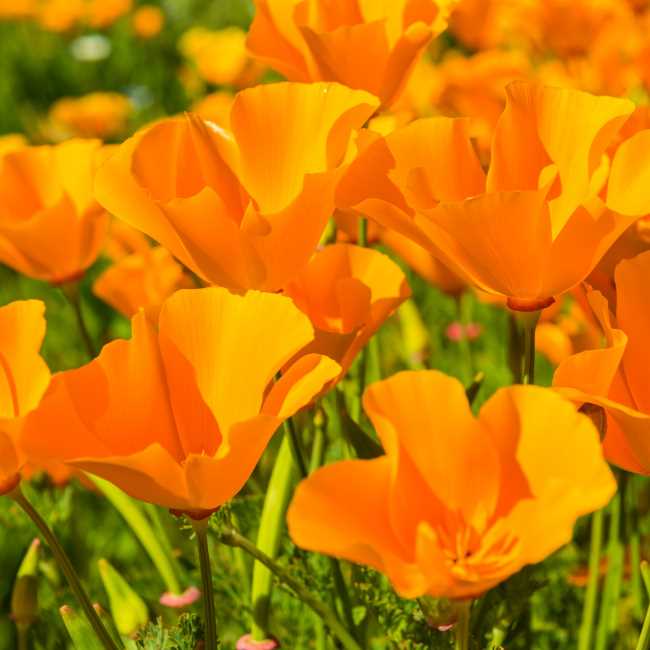
Ashscholzia seeds germinate best when exposed to cool temperatures, ideally between 50°F and 65°F (10°C and 18°C). If the weather gets too hot, you can provide shade using a lightweight cloth or provide some shade with taller plants nearby.
Step 6: Care for the seedlings
Once the seedlings emerge, thin them out if they are too crowded. Aim for a spacing of about 12 inches between each plant to ensure proper airflow and prevent overcrowding.
Step 7: Maintain the plants

Ashscholzia plants do not require much maintenance, but you should provide them with regular water during dry periods. Additionally, you can apply a balanced fertilizer once a month to encourage healthy growth and prolonged blooming.
With these simple steps, you can successfully plant Ashscholzia seeds and enjoy the vibrant and delicate flowers in your garden. Just make sure to provide them with the right conditions and care, and they will thrive and add beauty to your outdoor space.
Ashscholzia Watering and Care
Watering
Proper watering is essential for the healthy growth of Ashscholzia plants. These flowers require moderate watering, as they are drought-tolerant once established. Here are some guidelines to follow when watering your Ashscholzia plants:
- Water the plants deeply, providing enough water to saturate the soil to a depth of at least 6 inches.
- Watering should be done in the morning to allow the foliage to dry before evening, which helps prevent diseases.
- Do not overwater the plants, as this can lead to root rot and other issues. Allow the soil to dry out slightly between waterings.
- Ashscholzia plants are more drought-tolerant than other flowers, so be careful not to water them too frequently.
Care
Taking care of Ashscholzia plants involves a few simple steps to ensure they thrive:
- Provide full sun exposure for at least 6 hours a day. These plants love sunlight and require it for proper growth and flowering.
- Ensure well-drained soil. Ashscholzias prefer sandy or loamy soil with good drainage. Amend the soil with organic matter if necessary to improve drainage.
- Apply a layer of mulch around the plants to help retain moisture and suppress weeds. This also helps keep the roots cool during hot weather.
- Deadhead faded flowers regularly to promote continuous blooming and prevent seed development.
- Fertilize the plants once a month during the growing season with a balanced flower fertilizer. Follow the package instructions for the application rate.
- Monitor for pests and diseases, such as aphids and powdery mildew. Treat any issues promptly using organic or chemical methods appropriate for the problem.
- Divide and replant Ashscholzia clumps every few years to maintain their vigor and prevent overcrowding.
Conclusion
Following proper watering and care practices is essential for the success of your Ashscholzia plants. By providing adequate water, sunlight, and regular maintenance, you can enjoy beautiful and vibrant flowers throughout the growing season.
Common Ashscholzia Pests and Diseases
Ashscholzia plants are generally hardy and resistant to many pests and diseases. However, they can still be susceptible to a few common issues. Here are some of the most common pests and diseases that can affect Ashscholzia plants:
Pests
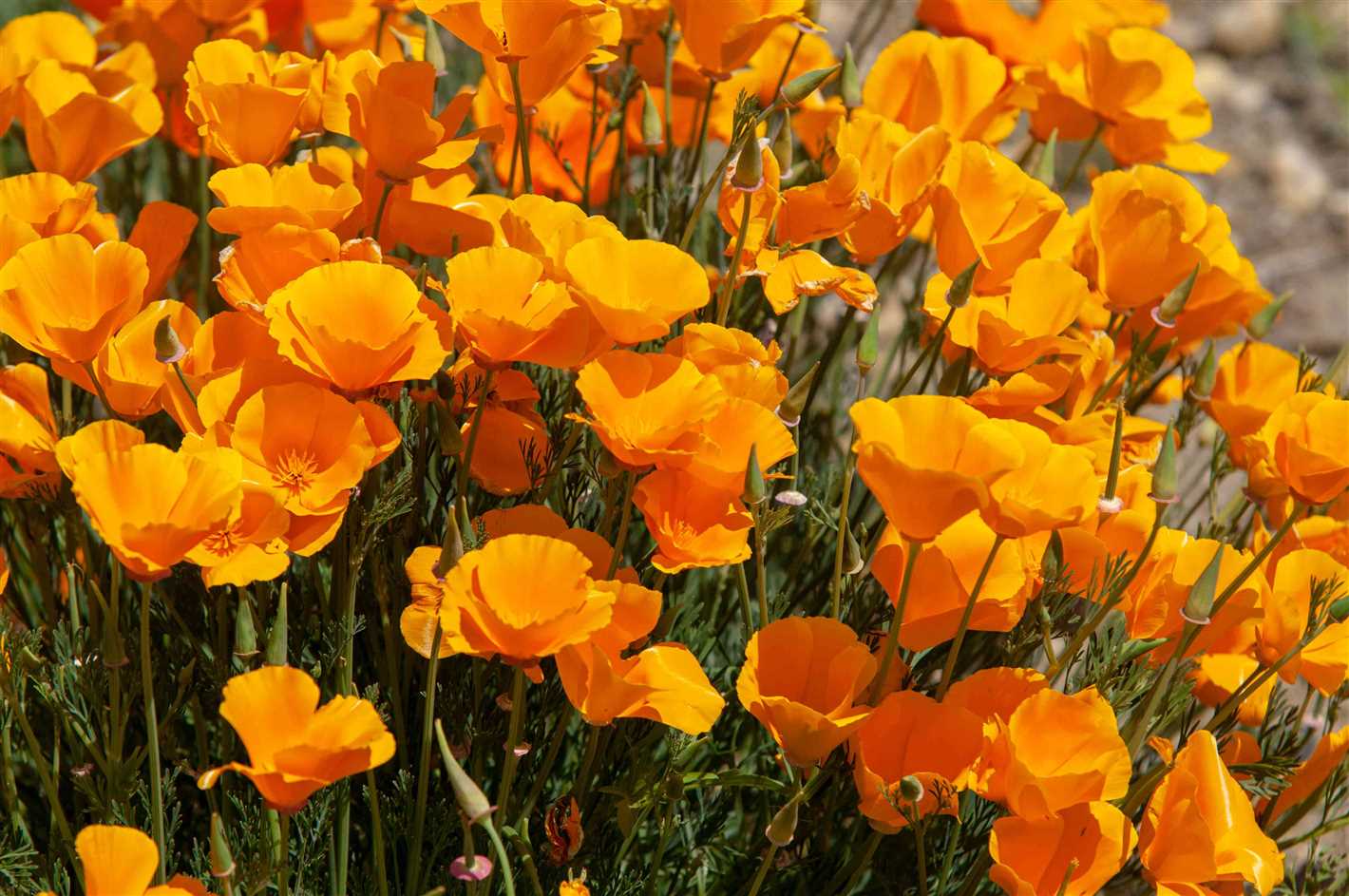
- Aphids: These small insects can suck the sap from plant leaves and stems, causing them to wither and die. To control aphids, you can try spraying the plants with a mixture of water and mild dish soap or using natural aphid predators like ladybugs.
- Slugs and snails: Slugs and snails can chew on Ashscholzia leaves, leaving behind irregular holes and damage. You can use traps, barriers, or organic slug pellets to control these pests.
- Spider mites: Spider mites are tiny pests that feed on plant sap and can cause discoloration and browning of Ashscholzia leaves. Regularly spraying the plants with water can help deter these pests.
- Caterpillars: Caterpillars can eat through Ashscholzia leaves, causing significant damage to the plant. Handpicking caterpillars or using organic insecticides can help control their population.
Diseases
- Powdery mildew: Powdery mildew is a fungal disease characterized by a white, powdery growth on the leaves of plants. To prevent powdery mildew, avoid watering the plants from above and ensure good air circulation around the plants.
- Gray mold: Gray mold is a common fungal disease that can affect Ashscholzia plants, especially in humid conditions. It causes grayish-brown spots and fuzzy growth on the plant. Proper spacing, good air circulation, and avoiding over-watering can help prevent gray mold.
- Root rot: Over-watering or poorly draining soil can lead to root rot in Ashscholzia plants. To prevent root rot, make sure the soil is well-draining and allow the top few inches to dry out between waterings.
- Leaf spot: Leaf spot is a fungal disease that causes dark spots on the leaves of Ashscholzia plants. Removing and destroying infected leaves can help prevent the spread of the disease.
By being vigilant and taking proper care of your Ashscholzia plants, you can help prevent and manage any potential pest or disease problems that may arise.
Harvesting and Using Ashscholzia
Harvesting: Ashscholzia plants produce beautiful and vibrant flowers that can be harvested for a variety of purposes. The flowers typically have a short lifespan, so it’s important to harvest them when they are at their peak bloom. To harvest the flowers, simply cut the stems a few inches below the flowers using clean, sharp scissors or pruning shears.
Using Ashscholzia flowers: Ashscholzia flowers have a delicate and papery texture, making them ideal for a range of creative and decorative uses. Here are a few ideas for how you can use Ashscholzia flowers:
- Add them to floral arrangements: Ashscholzia flowers can add a pop of color and texture to any floral arrangement. Simply cut the stems and place the flowers in a vase or bouquet with other complementary flowers.
- Make potpourri: Drying Ashscholzia flowers can help preserve their color and fragrance. Once dried, you can use them to make potpourri by mixing them with other dried flowers and essential oils.
- Create pressed flower art: Ashscholzia flowers can be easily pressed and preserved in a frame or used to create unique pieces of artwork. Simply place the flowers between the pages of a heavy book and leave them to dry for several weeks.
- Use them in culinary creations: Ashscholzia flowers have a mild, slightly sweet taste and can be used to add a touch of color and flavor to salads, desserts, and beverages. They can be used fresh or dried for culinary purposes.
Storing Ashscholzia flowers: If you’re not planning on using the Ashscholzia flowers immediately, it’s important to store them properly to maintain their color and shape. Place the cut flowers in a container filled with clean water and store them in a cool, dark place away from direct sunlight. Change the water every few days to keep the flowers fresh.
Conclusion: Ashscholzia flowers are not only beautiful in the garden but also versatile when harvested. From floral arrangements to culinary creations, there are countless ways to use and enjoy Ashscholzia flowers. Experiment with different ideas and let your creativity bloom!
Questions and Answers:
Can I grow Ashscholzia from seeds?
Yes, you can grow Ashscholzia from seeds. It is actually the most common method of propagation for this plant.
When should I plant Ashscholzia seeds?
Ashscholzia seeds should be planted in early spring, after the last frost has passed. This allows them to establish before the hot summer temperatures.
How do I plant Ashscholzia seeds?
To plant Ashscholzia seeds, you should first prepare a well-draining soil mixture. Scatter the seeds on the soil surface and lightly press them into the soil. Water gently to moisten the soil and keep it consistently moist until the seeds germinate.
How long does it take for Ashscholzia seeds to germinate?
Ashscholzia seeds usually germinate within 10 to 15 days, although it can sometimes take up to 30 days. Patience is key while waiting for germination.
Where should I plant Ashscholzia?
Ashscholzia should be planted in a sunny location that receives at least 6 hours of direct sunlight per day. It prefers well-draining soil and can tolerate sandy or rocky soil conditions.
What is the best way to care for Ashscholzia?
To care for Ashscholzia, make sure to water it regularly, keeping the soil consistently moist. Deadhead the spent flowers to encourage continuous blooming. Ashscholzia is a low-maintenance plant, but it may benefit from a light application of fertilizer every few weeks.
How tall does Ashscholzia grow?
Ashscholzia typically grows to a height of 6 to 10 inches, although some varieties can reach up to 12 inches. It has a compact, mounding habit.







